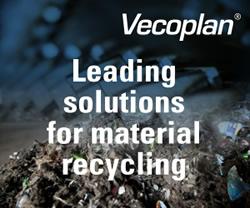H2USA, Department of Energy Announce New Tools for Hydrogen Fueling Infrastructure Deployment
H2USA and the U.S. Department of Energy (DOE) today announced two new tools and the release of two reports developed through H2USA to support hydrogen fueling infrastructure deployment.
(Washington, D.C.) April 21, 2015 - H2USA and the U.S. Department of Energy (DOE) today announced two new tools and the release of two reports developed through H2USA to support hydrogen fueling infrastructure deployment. H2USA is a public private partnership co-launched in 2013 by DOE and industry to develop hydrogen infrastructure and deploy fuel cell electric vehicles (FCEVs) across the United States.
The tools, the Hydrogen Refueling Stations Analysis Model (HRSAM) and the Hydrogen Financial Analysis Tool (H2FAST), were developed by Argonne National Laboratory and the National Renewable Energy Laboratory (NREL) respectively to address the key technical and financial barriers to hydrogen fueling infrastructure deployment.
HRSAM will help to assess the impact of station design on the economics and incorporates a stations capital and operating cost based on key design variables such as station capacity and mode of hydrogen delivery.
To complement HRSAM, H2FAST provides in-depth financial analysis including cash flow and return on investments for hydrogen fueling stations based on key financial inputs such as station capital cost, operating cost, and financing mechanisms.
The models are available online at http://www.hydrogen.energy.gov/h2a_delivery.html and http://www.nrel.gov/hydrogen/h2fast.
The Hydrogen Fueling Infrastructure Research and Station Technology (H2FIRST) project, which supports H2USA by addressing critical R&D barriers to station deployment, has published two reports. The first report details a reference station design analysis, and the second report summarizes hydrogen contaminant detection capabilities. H2FIRST is being led by Sandia National Laboratories (SNL) and NREL and is an excellent example of DOEs efforts to promote strong lab-to-lab collaboration and to utilize national lab capabilities and facilities in addressing challenges faced by industry.
The Reference Station Design report details engineering designs and economic analyses of five hydrogen refueling station designs that can meet near-term market needs. The authors evaluated station economics using HRSAM, and then prepared detailed designs which include piping and instrumentation designs, and bill of materials. These reference designs are meant to help stakeholders evaluate station configurations and to encourage standardization of station components.
The Hydrogen Contaminant Detection Report describes the current commercial state of the art in contamination detection and identifies the technical requirements for implementing a hydrogen detection device at a station. H2USAs Hydrogen Fueling Station Working Group and industry stakeholders peer reviewed the report and provided feedback.
The Reference Station Design and Hydrogen Contaminant Detection Reports are available online at http://www.nrel.gov/docs/fy15osti/64107.pdf and http://www.nrel.gov/docs/fy15osti/64063.pdf.
"As States with zero-emissions vehicle programs continue the commercial deployment of fuel cell electric vehicles, these tools and reports will support investors, regulatory bodies, and engineering design firms in developing cost-effective fueling infrastructure," said Morry Markowitz, Secretariat for H2USA.
For more information on H2USA, please visit us online at www.h2usa.org.
###
About H2USA
H2USA is a public-private collaboration to promote the commercial introduction and widespread adoption of hydrogen fueled fuel cell electric vehicles across America. H2USAs mission is to address hurdles to establishing hydrogen fueling infrastructure, enabling the large scale adoption of fuel cell electric vehicles.
Featured Product

